English Ivy Laundry Detergent
Did you know you could go foraging for laundry detergent? There’s a free alternative to industrial detergent, and it’s right in your backyard. Get ready to ditch toxic chemicals, unnecessary packaging, and carbon emissions. Presenting: the ultimate eco-friendly English ivy laundry detergent recipe.
— Permacrafters gets commissions for purchases made through links in this post. We encourage you to prioritize secondhand goods whenever possible. —
Are you concerned about the chemicals that are present in industrial cleaning products? If you live in the States, you have reason to be. Industries do not have to scientifically demonstrate the safety of a chemical before it’s available for sale on the market. What’s more, learning the long list of hormone-disrupting or cancer-causing ingredients to avoid won’t help much: many toxic ingredients aren’t even required to be listed on labels (like phthalates, 1-4 dioxane, and toluene).
But I have good news. You don’t have to be a lab rat. You can make your own effective cleaning products – laundry detergents included – without breaking the bank.
There are many efficient laundry detergent recipes that won’t harm your health and that won’t pollute the waterways with toxic chemicals. In our case, we typically make a laundry powder by mixing baking soda, washing soda, and Castile or Marseille soap (with extra sodium percarbonate if we’re dealing with white clothes!). For those who are fond of going 100% plant-based, you can purchase soap nuts from the Sapindus Mukorossi tree to use the nuts’ saponin content wash your clothes. But unless you live on the foothills of the Himalayas, or live right by a salt lake in Wyoming or Turkey, the soap nuts or baking soda have to travel quite a ways to get to you.
So how about an option where you can go full-blown permaculture, full-fledged off-grid, where you ditch the carbon emissions, ditch the plastic or paper packaging, ditch the dollar bills, and actually go forage yourself for your own laundry detergent?
Your dreams are about to come true. Meet your friendly neighborhood English ivy plant. You know that invasive plant growing all over your neighbor’s house? That’s the one. You’ve known it since you were a child, but did you know it is rich in saponin? Saponin is a natural detergent and foaming substance. It’s a surfactant that is effective at lifting grease, dirt and grime from clothing. The more saponin a plant has, the better it will clean. And there’s no shortage of English ivy leaves: they are evergreen. So, how do you use the English ivy’s rich saponin content to wash your clothes? You make a decoction. Here are the materials you will need and the steps to follow to make your English ivy laundry detergent.
Preparation Time: 25min
Total time: about 14 hours
Makes enough for 6 loads of laundry.
Materials and ingredients:
- 60 English ivy leaves (Hedera helix)
- 4.5 cups of water
- Gloves (for people with sensitive skin)
- A foraging basket
- Large pan
- A tea filter or cheesecloth
- Vinegar (optional)
Steps*:
* See instructional video below as a visual aid!
1. Go foraging for English ivy (Hedera helix)!
o If you live in Europe, western Asia or the United States, you’ll likely find the vine growing on a tree in the forest or covering the walls of a house in your neighborhood. English ivy is invasive in the United States and is classified as a noxious weed. If you’re unsure how to identify it properly, you can use a plant guide for help. (It’s important that you are 100% certain in your identification. To be clear, I am not talking about poison ivy…)
2. Put your gloves on and collect the leaves.
o The sap from the English ivy can cause skin irritations. Wearing gloves is a preventative measure in case you have sensitive skin.
o Collect 60 English ivy leaves and place them in your foraging basket or bag.
3. Make a decoction.
o Once home, rinse and scrunch the leaves in your hands – leave the gloves on if you have sensitive skin.
o Put the leaves in a pan and add 4.5 cups of water.
o Put the pan on your stove and bring the water to a boil. Let it boil for 15 minutes.
4. Wait and filter.
o Let the ivy tea cool for about half a day.
o Then, squeeze the leaves by hand (with gloves) so that their juices drip out into the tea. Discard the leaves into your compost pile.
o Filter the tea into a jar by using a tea filter or cheesecloth.
5. Wash your clothes!
o For each load of laundry, add ¾ cups of this tea. This recipe makes enough for about 3 loads of laundry.
6. Extend the life of the detergent.
o To make your English ivy laundry detergent keep longer, store it in your fridge or add a little bit of vinegar to it (at a 1:5 ratio).
The English ivy laundry detergent is perfect for wool clothes and delicates! What it isn’t meant for is your children’s cloth diapers or clothes that are absolutely filthy and stained.
Is it practical to make this laundry detergent? Nope! But does it feel great to get out in nature, learn about what gifts your local plants have to offer, and be resourceful? You betcha.
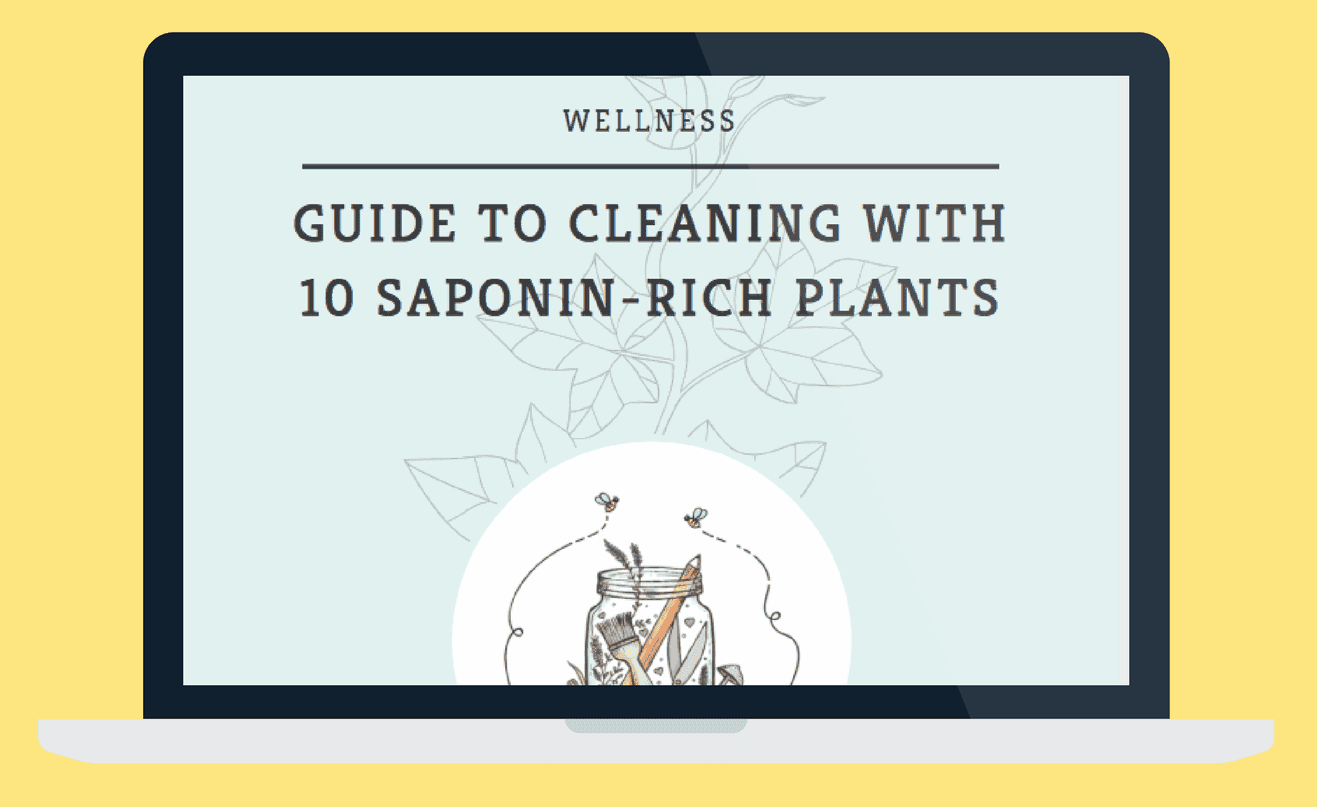
Thirsty to discover what other plants you can forage for or grow to make natural laundry detergent?
Download your FREE guide to 10 saponin-rich plants for cleaning! Some of them may grow right in your garden!
Are you going to give this English ivy laundry detergent a try? (If so, bring the children in your life along with you – they will have a blast!) Let us know about your experience in the comments below!
Prefer to purchase your saponin-rich plants instead of foraging for them? Check out our post on how to use soap nuts for green cleaning and natural skin care.
If you’re a Triangle (NC) local then I highly recommend you discovering plant walks and in-person classes through Will’s Wild Herbs and Abundance Healing Arts.
Happy foraging!
Christelle and Cristina.
3-Day Green Cleaning Challenge

Join our FREE 3 day green cleaning challenge to make your own DIY products. Start your journey to a healthier home & planet!
By commenting you accept our Privacy Policy.
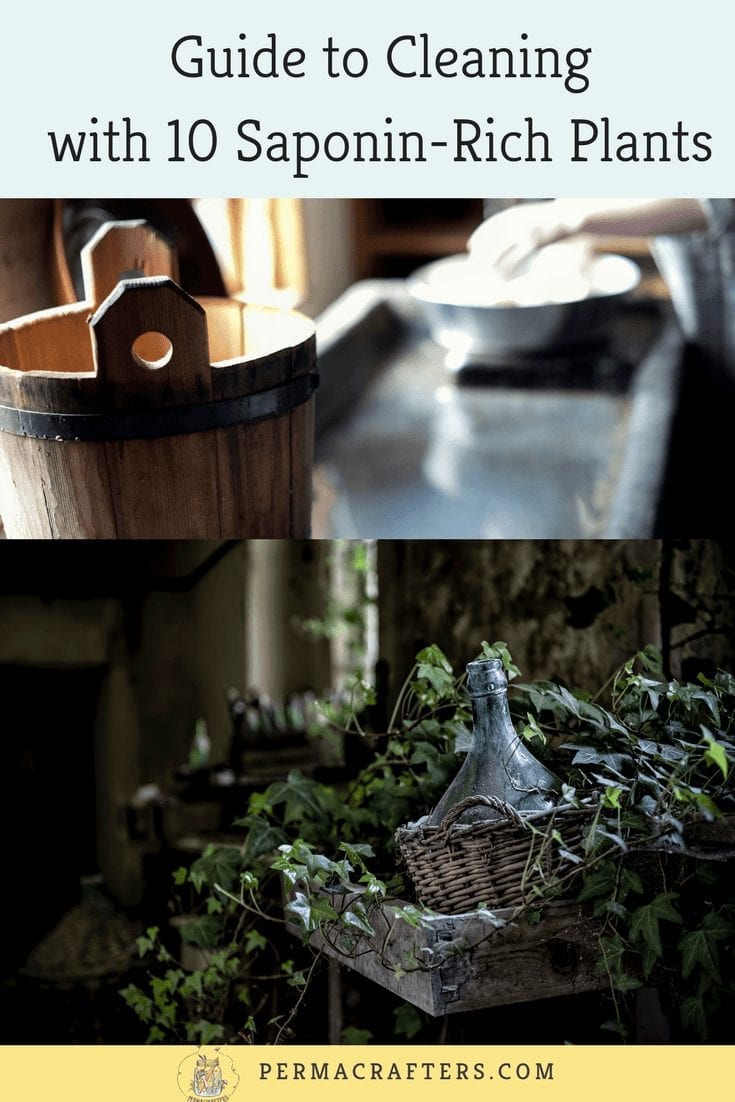
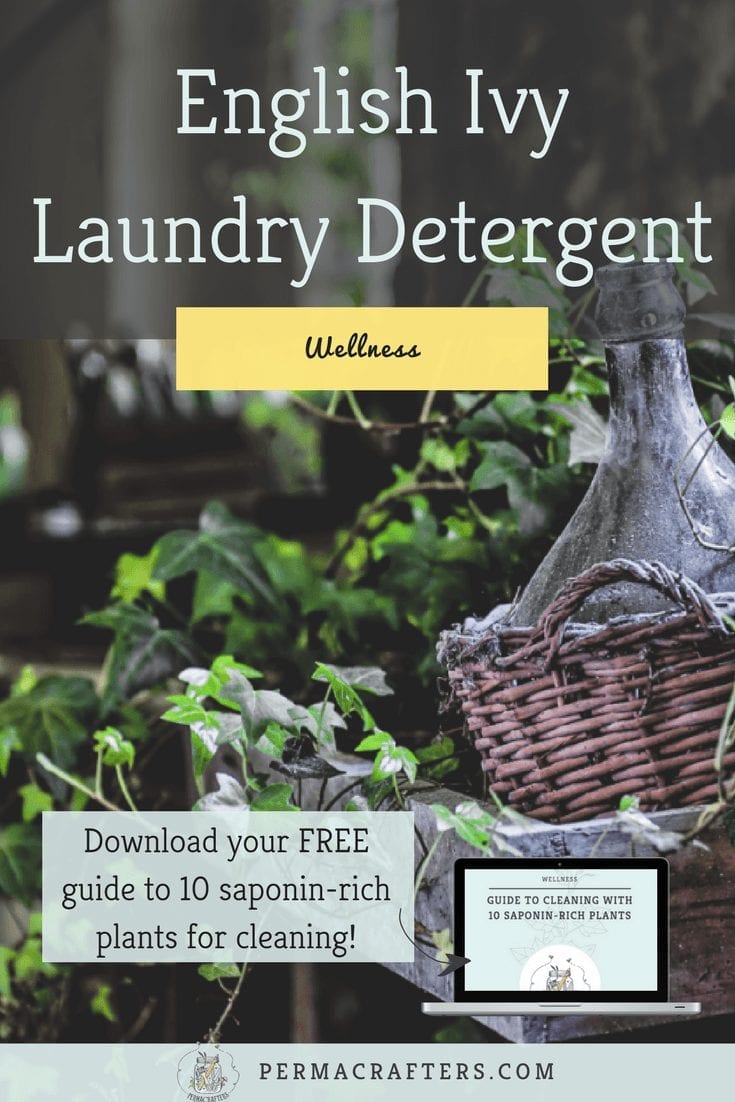
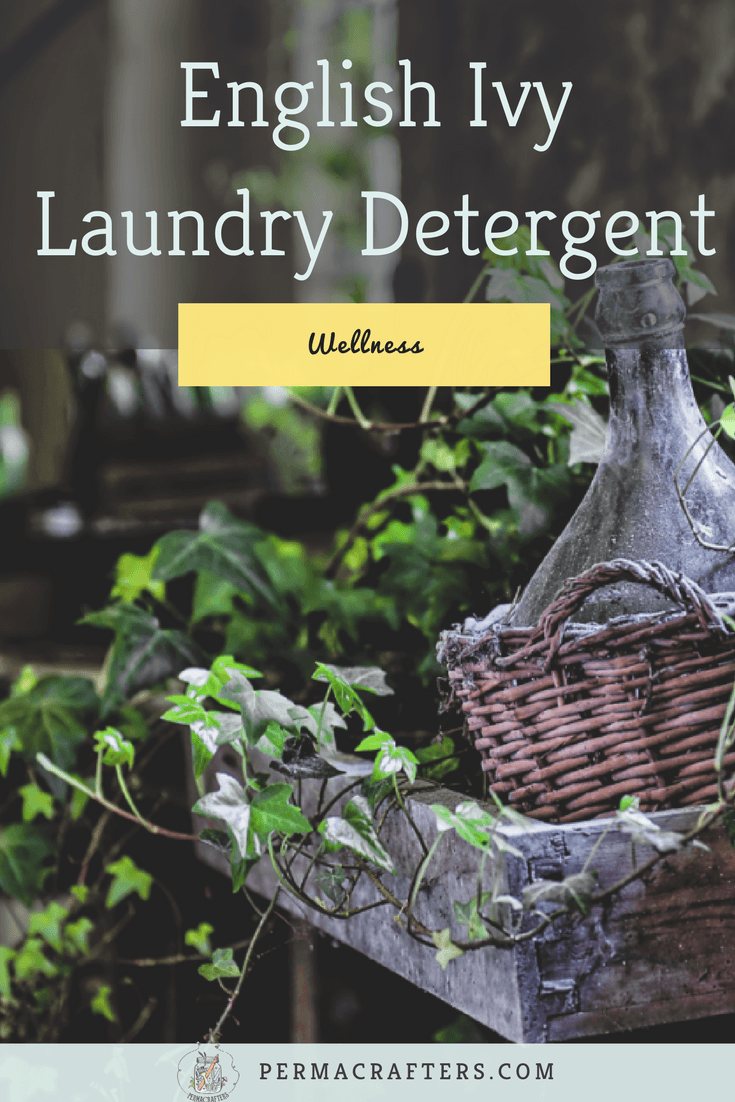
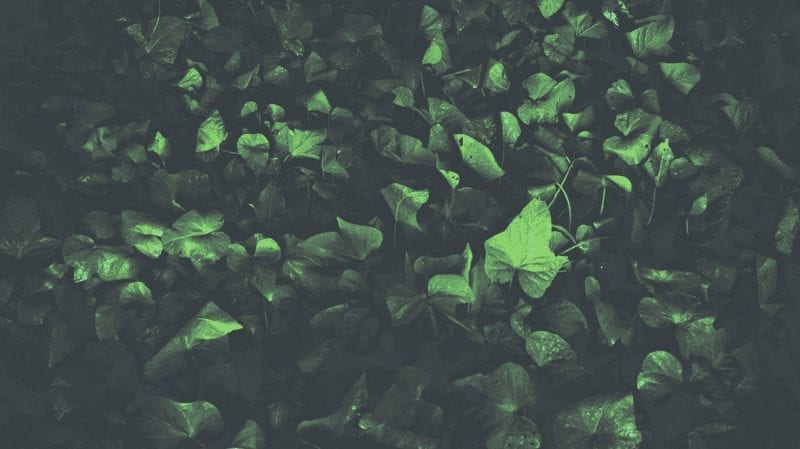
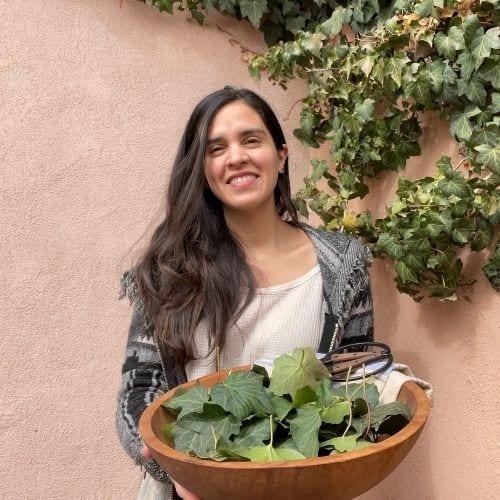
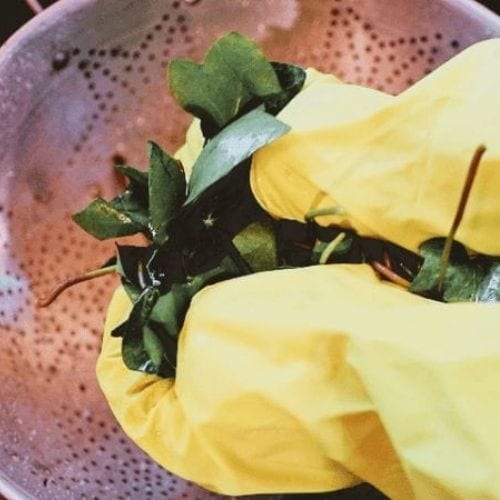
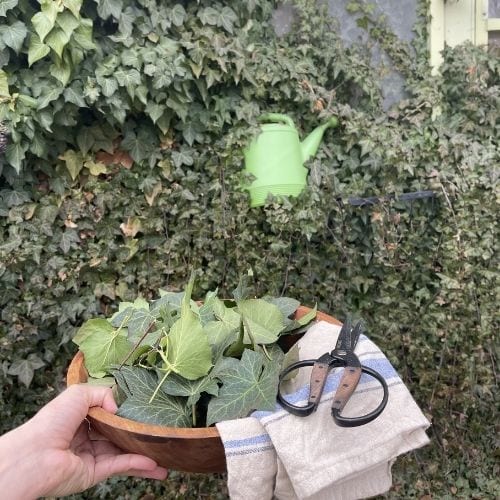
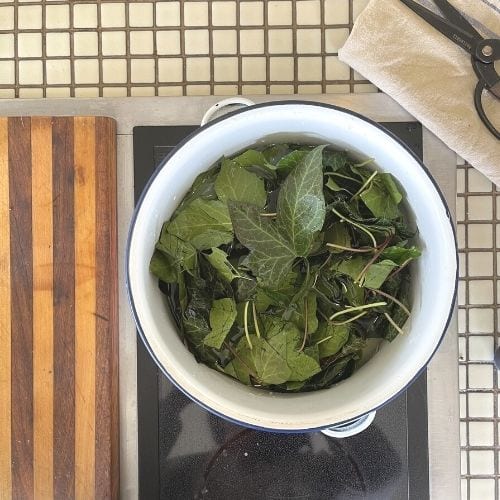
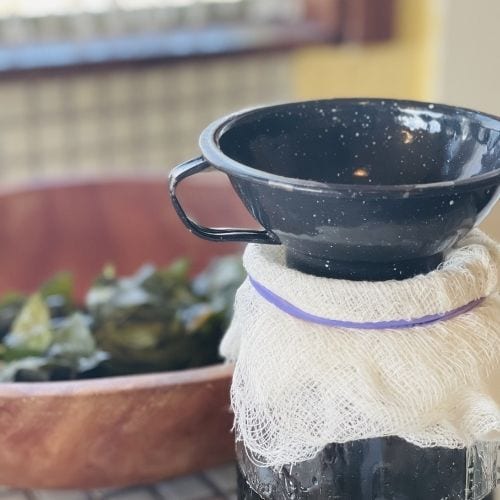
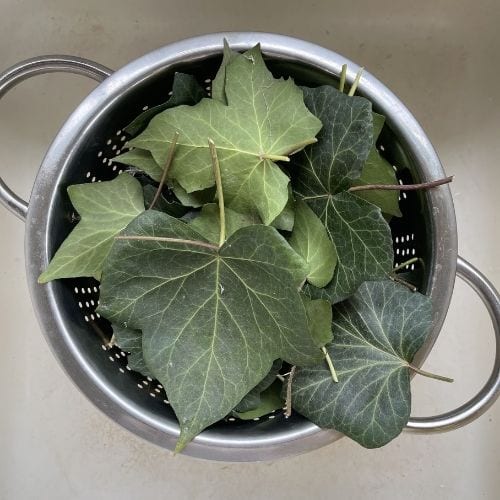
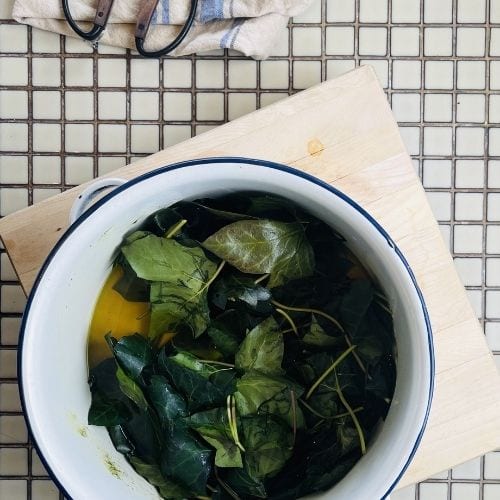
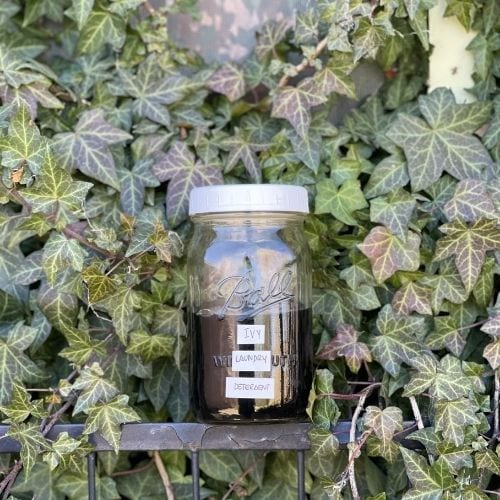
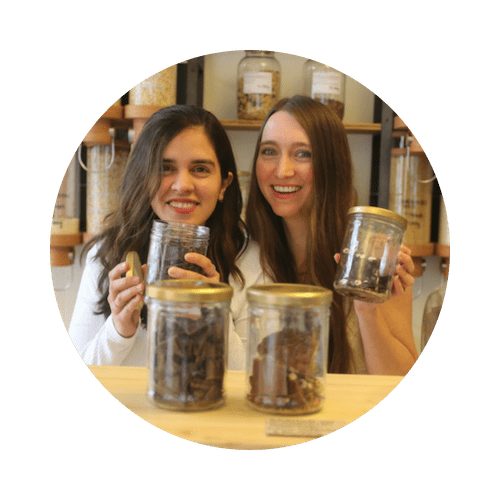
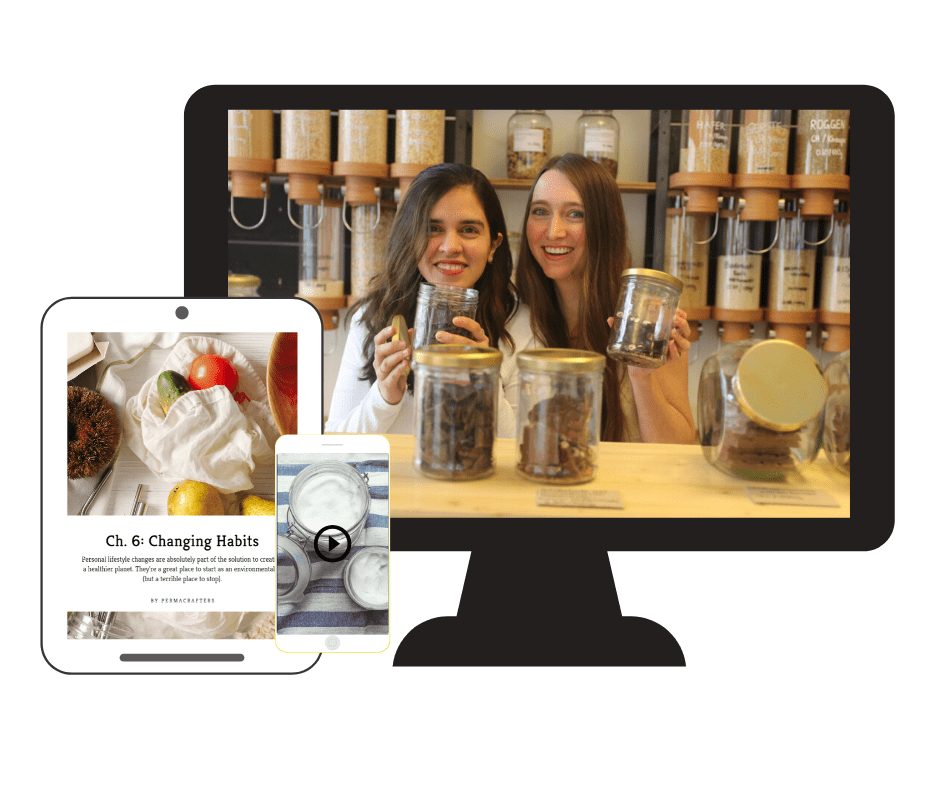
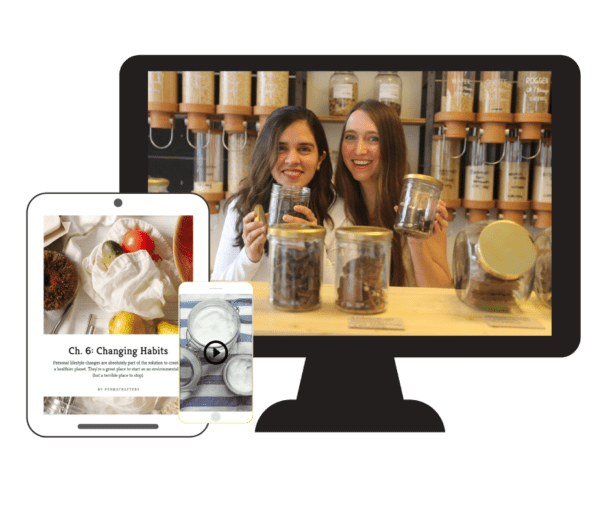
Hi there – quick clarification about the blog post in case it wasn’t clear. English ivy is invasive in the United States. We are encouraging you to go FORAGE for it, not help it grow and take over native species. 🙂
Hi thanks for this info. When I read it I tried using ivy like I used soapnuts: putting 5 big leaves, (roughly chopped) in a sock, tying a knot to keep them trapped and throwing it in with the wash. It works fantastically well, definitely better than soapnuts. It’s cleaned oil and blood perfectly. Doing it this way is both quick and easy. It’s now my regular laundry method. I have a few pics on insta @cleareasmud
That is so awesome! We will try this too! Thanks so much for the tip!
I can’t wait to try this! I’m constantly pulling out invasive ivy vines. I’ll have a never ending supply!
We are glad you find it useful! 🙂
Instead of using it in the washer for laundry, can you use the ivy water to make a bar soap?? Substitute it for they lye?
Thanks!
hello, you literally opened my eyes today! i was searching a natural way to clean my raw sheep wool, and found your page. just cannot decide what will work better for wool degreasing? ash water or ivy? im using cold water to wash, have no option to heat such amount of it outside. thanks
Can I dry the ivy for FUTURE DECOCTIONS?